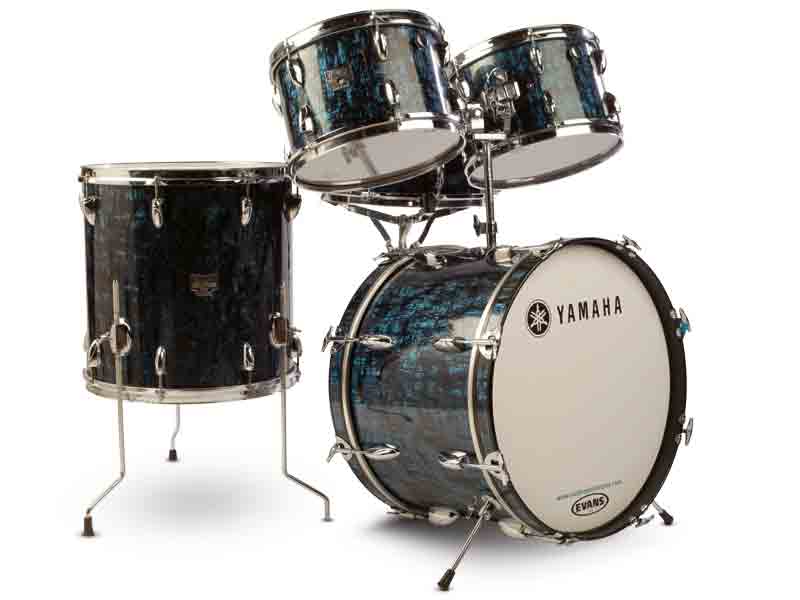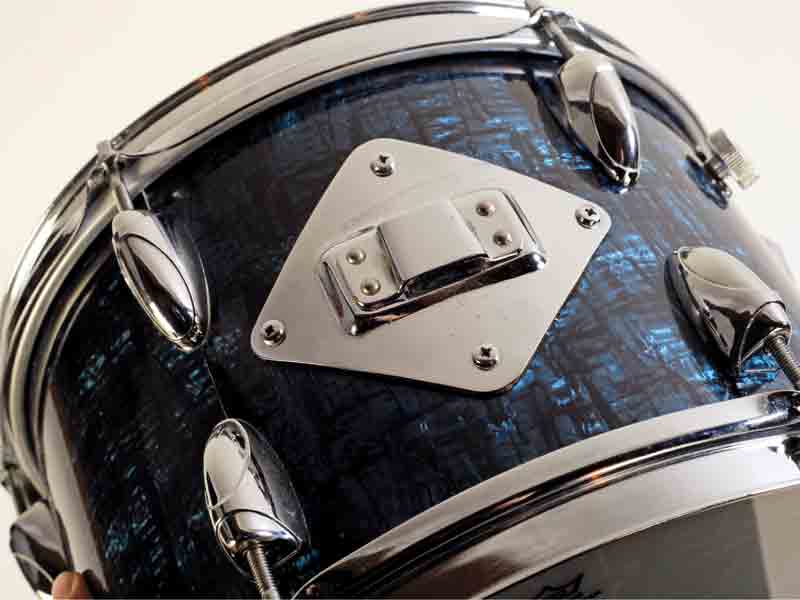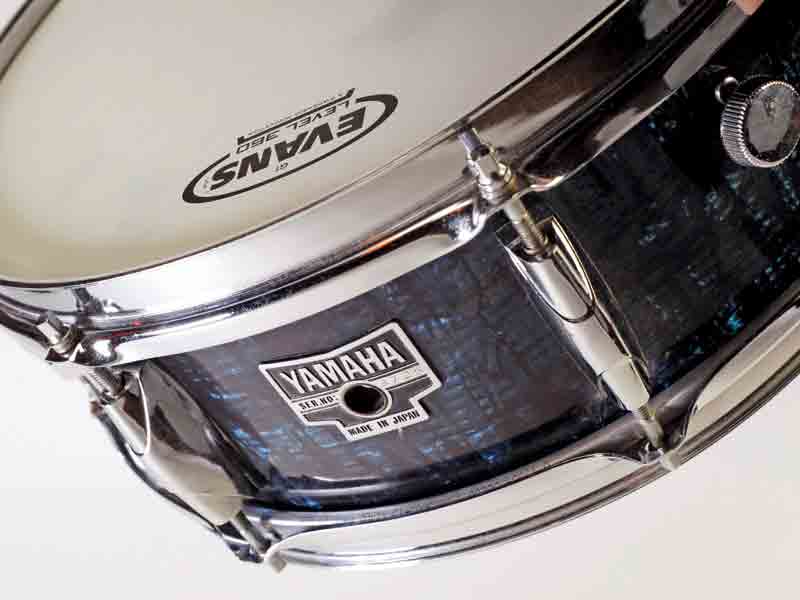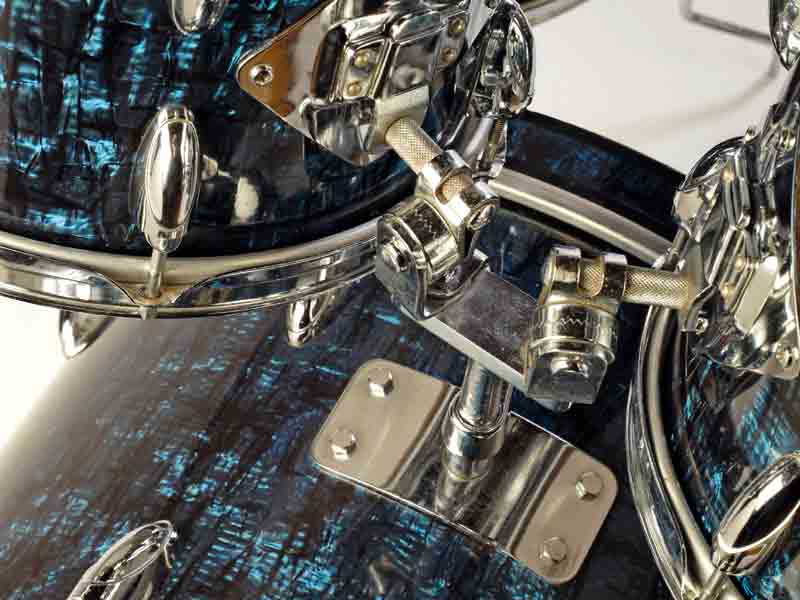
Yamaha DT-225
Yamaha embarked on modern drumset production in 1967, with drums and hardware made in the company’s Shinzu factory, Hamamatsu, Japan.
The first kits echoed American styles with Gretsch-like lugs, straight-sided shells and an inner paint coating. Yet right from the off Yamaha signalled its intention to innovate with the staggered diagonal seam shells featured on this early kit and later copied by several other companies.

Small tom
Preserved in as-new condition, what we have here is probably the only example of Yamaha’s first top-line DT-225 kit to have surfaced in the UK. It was unearthed by Nick Hopkin (www.nickhopkindrums.com), who says, “The drums are late-1960s, Yamaha’s first professional set, with six-ply shells, rounded bearing edges and grey coated interiors.
“It’s in mint condition, with no extra holes or major scratches, scuffs or fading to the wrap.” Nick believes the unique wrap was called Blue Pine. He also points out that he’s fitted the kit with new Evans heads and a replica Yamaha logo front bass drum head.

14"x5" snare drum
The DT-225 has 20"x14" bass drum, two 12"x8" toms, 16"x16" floor tom and matching 14"x5" snare drum. There is a full complement of lugs, 16 on the bass drum and floor tom, 12 on the small toms and eight double-ended on the snare drum. The bass drum also has inlaid wooden hoops, while cheaper kits had steel bass drum hoops and fewer lugs.
“The snare drum came with the kit,” Nick continues. “Unfortunately, at some point the throw-off has been replaced with something modern, which I’ve left on the drum. When I finally source the correct throw, I will replace it to complete the set.”

Double Tom Mount
As for background, Nick reveals, “Its previous owner bought the kit in the early 1980s and had pretty much kept it cased ever since.
"He has a studio in his house where he does music for TV, and generally he programs the drums. So this kit had been used maybe twice in 30 years. He’d recently started doing a few sessions with live drums, but thought the kit was too special to use regularly, so he bought a modern kit.
“I disagree with this, because the set sounds amazing, as anyone who’s played it in my shop will testify. The bass drum is one of the nicest 20"s I’ve heard, and it records really well.
"The two 12"x8"s make it a bit quirky and you have to be accurate with tuning them, but I generally play it with one up, one down. The floor tom is thunderous, with a warm bottom end.
"The drums tune and respond well in all ranges. Damped, they give a really nice ‘thud’. I’m tempted to keep the kit cased and bring it out for a play now and then as it is a real piece of history.”